Hindu iconography
Origins and Development
Hindu iconography, a significant aspect of Hinduism, has its roots in the ancient Indus Valley Civilization. The civilization, known for its advanced urban planning and impressive architecture, also gave birth to a rich array of symbols and images that would later evolve into the complex system of Hindu iconography we know today. The seals and figurines discovered from the Indus Valley sites depict a variety of animals, humans, and divine beings, hinting at the civilization's spiritual and religious beliefs.
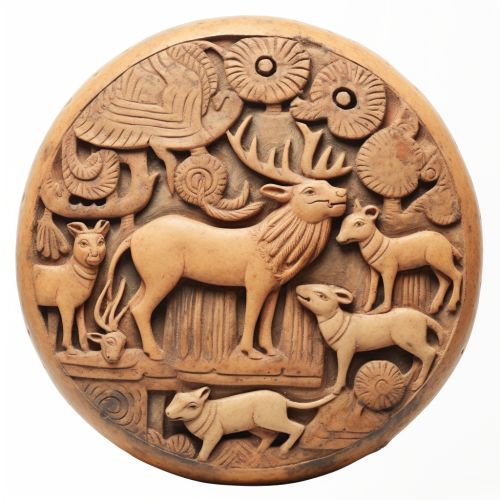
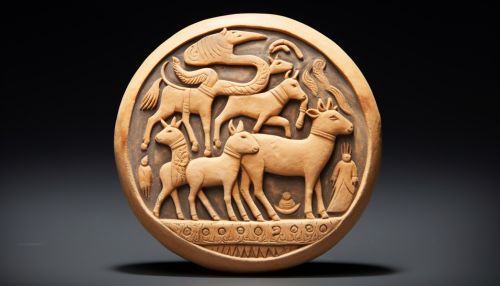
The development of Hindu iconography is closely tied to the evolution of Hinduism itself. With the decline of the Indus Valley Civilization and the arrival of the Aryans, new symbols and deities were introduced, enriching the existing iconographic tradition. The Vedic period, marked by the composition of the Rigveda, Samaveda, Yajurveda, and Atharvaveda, saw the emergence of deities like Indra, Agni, Varuna, and Vayu, each with their unique attributes and symbols.
Elements of Hindu Iconography
Hindu iconography is characterized by a rich and diverse set of symbols, each carrying profound meanings. These symbols are used to represent various aspects of the divine, the universe, and the human condition. They range from simple geometric shapes like the Swastika and the Shri Yantra, to complex depictions of gods and goddesses, each with their unique attributes and vehicles.
Deities
In Hindu iconography, deities are often depicted with multiple arms, each holding a different object. These objects, known as attributes, symbolize the deity's powers and functions. For instance, Lord Shiva is often depicted with a trident (trishula), a drum (damaru), and a deer, among other things. The trident represents his power to destroy evil, the drum symbolizes the rhythm of creation, and the deer represents the fleeting nature of life.
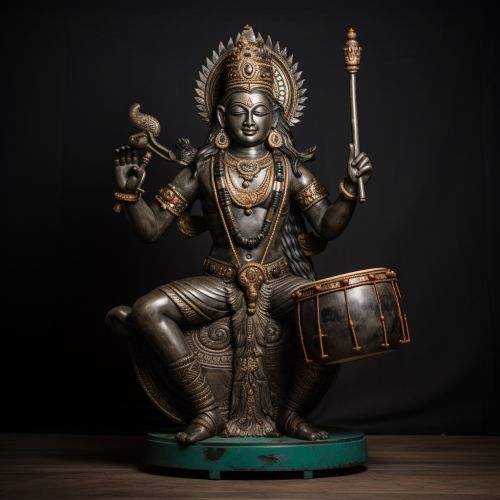

Symbols
Symbols play a crucial role in Hindu iconography. They are used to convey complex philosophical concepts in a simple, visual form. For instance, the Om symbol, considered the most sacred symbol in Hinduism, represents the essence of the universe. It is believed to be the sound of creation, encompassing all sounds in the universe.
Another important symbol in Hindu iconography is the Swastika. Despite its controversial usage in the 20th century, the Swastika is an ancient symbol of prosperity and good fortune in Hinduism. It is often seen in temples, homes, and auspicious ceremonies.
Yantras
Yantras are geometric diagrams used in Hindu worship and meditation. They are believed to be visual representations of mantras (sacred sounds) and deities. Each Yantra has a specific pattern and structure, and is used for a specific purpose. For instance, the Shri Yantra, one of the most famous Yantras, is used for the worship of the goddess Lakshmi.
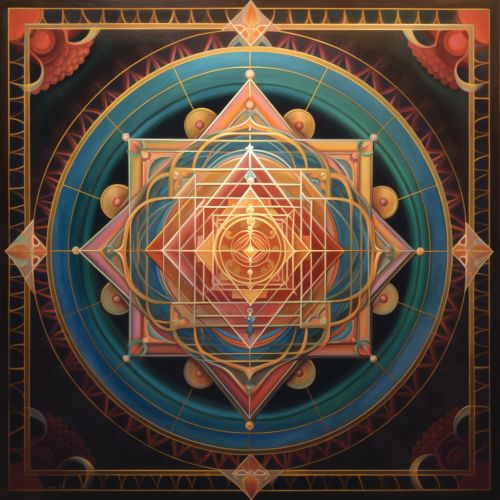

Role in Worship and Rituals
Hindu iconography plays a central role in worship and rituals. The images and symbols used in Hindu iconography serve as a medium for devotees to connect with the divine. They are not just artistic representations, but are considered to be manifestations of the divine itself.
During worship, devotees offer prayers, flowers, food, and other offerings to the deity's image. This practice, known as Puja, is a central part of Hindu worship. The deity's image is also taken out in processions during festivals, allowing devotees to receive blessings.
Influence on Art and Architecture
Hindu iconography has had a profound influence on Indian art and architecture. The intricate carvings on ancient temples, the colorful frescoes, and the detailed sculptures are all imbued with the symbols and images of Hindu iconography. These artistic expressions not only serve a religious purpose, but also reflect the rich cultural heritage of India.

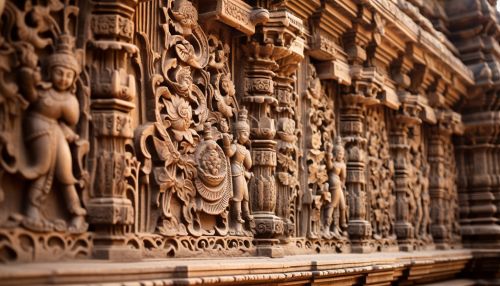
Conclusion
Hindu iconography, with its rich array of symbols and images, offers a fascinating insight into the spiritual and philosophical beliefs of Hinduism. It serves as a visual language, conveying profound truths about the divine, the universe, and the human condition. Despite its ancient origins, it continues to be a vital part of Hindu worship and culture, reflecting the enduring relevance of these timeless symbols.
